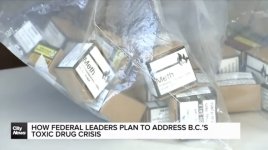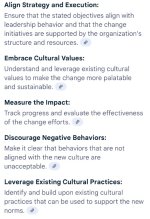California mayor suggests giving homeless 'all the fentanyl they want' to 'purge' problem
Author of the article enette Wilford
enette Wilford
Published Apr 21, 2025 • Last updated 15 hours ago • 2 minute read
Lancaster, California Mayor R. Rex Parris speaking at the TBI Med Legal Conference in San Diego.
Lancaster, California Mayor R. Rex Parris speaking at the TBI Med Legal Conference in San Diego.
A mayor in Southern California is under fire for comments he made about eliminating his city’s homeless population.
Lancaster Mayor R. Rex Parris said he wants to wipe out the city’s homeless numbers by giving them “all the fentanyl they want.”
He then doubled down on his suggestion, telling KTTV that homeless criminals “need to be purged.”
Parris shared his controversial comments during a city council meeting in February after a resident slammed the city’s attempt to address Lancaster’s homeless crisis by “enclosing” the unhoused at an abandoned golf course near a residential neighbourhood, according to the outlet.
“What I want to do is give them free fentanyl,” Parris said, as he interrupted the woman’s remarks, according to video of the meeting.
“I mean, that’s what I want to do,” the Republic continued. “I want to give them all the fentanyl they want.”
The resident replied that his statement “was not kind.”
Parris, however, stands by his comments, telling the outlet he has no “regrets” but clarified that he was referring to unhoused criminals who “refuse” to get help.
“I made it very clear I was talking about the criminal element that were let out of the prisons that have now become 40% to 45% of what’s referred to as the homeless population,” Parris told KTTV.
“They are responsible for most of our robberies, most of our rapes, and at least half of our murders,” he continued, though Parris, who has been Lancaster’s mayor since 2008, did not offer data to support his claims.
“There’s nothing that we can do for these people,” he added.
Parris said he didn’t think anyone would take his comments “literally,” but added that fentanyl is “so easy” to get that it wouldn’t make a difference if highly addictive opioid was given away on the streets free of charge.
He also noted how his city is providing more “innovative” solutions to the homeless population than any other city in America, before wishing out loud that U.S. President Donald Trump would perform a federal extermination of the issue.
“Quite frankly, I wish that the president would give us a purge. Because we do need to purge these people,” Parris said.
“Now, is it harsh? Of course, it is harsh,” he admitted.
“But it’s my obligation as the mayor of the city of Lancaster to protect the hardworking families that live there, and I am no longer able to do it,” Parris said.
Johnathon Ervin, a Democrat who lost to Parris in the city’s mayoral election last year, told the Los Angeles Times that his former opponent is unfit to hold public office.
“Anyone willing to give homeless people all the fentanyl they want, or to suggest that President Trump should allow a purge of the homeless population, has no business in public office.”

 latimes.com
latimes.com

 torontosun.com
torontosun.com
Author of the article
Published Apr 21, 2025 • Last updated 15 hours ago • 2 minute read
Lancaster, California Mayor R. Rex Parris speaking at the TBI Med Legal Conference in San Diego.
Lancaster, California Mayor R. Rex Parris speaking at the TBI Med Legal Conference in San Diego.
A mayor in Southern California is under fire for comments he made about eliminating his city’s homeless population.
Lancaster Mayor R. Rex Parris said he wants to wipe out the city’s homeless numbers by giving them “all the fentanyl they want.”
He then doubled down on his suggestion, telling KTTV that homeless criminals “need to be purged.”
Parris shared his controversial comments during a city council meeting in February after a resident slammed the city’s attempt to address Lancaster’s homeless crisis by “enclosing” the unhoused at an abandoned golf course near a residential neighbourhood, according to the outlet.
“What I want to do is give them free fentanyl,” Parris said, as he interrupted the woman’s remarks, according to video of the meeting.
“I mean, that’s what I want to do,” the Republic continued. “I want to give them all the fentanyl they want.”
The resident replied that his statement “was not kind.”
Parris, however, stands by his comments, telling the outlet he has no “regrets” but clarified that he was referring to unhoused criminals who “refuse” to get help.
“I made it very clear I was talking about the criminal element that were let out of the prisons that have now become 40% to 45% of what’s referred to as the homeless population,” Parris told KTTV.
“They are responsible for most of our robberies, most of our rapes, and at least half of our murders,” he continued, though Parris, who has been Lancaster’s mayor since 2008, did not offer data to support his claims.
“There’s nothing that we can do for these people,” he added.
Parris said he didn’t think anyone would take his comments “literally,” but added that fentanyl is “so easy” to get that it wouldn’t make a difference if highly addictive opioid was given away on the streets free of charge.
He also noted how his city is providing more “innovative” solutions to the homeless population than any other city in America, before wishing out loud that U.S. President Donald Trump would perform a federal extermination of the issue.
“Quite frankly, I wish that the president would give us a purge. Because we do need to purge these people,” Parris said.
“Now, is it harsh? Of course, it is harsh,” he admitted.
“But it’s my obligation as the mayor of the city of Lancaster to protect the hardworking families that live there, and I am no longer able to do it,” Parris said.
Johnathon Ervin, a Democrat who lost to Parris in the city’s mayoral election last year, told the Los Angeles Times that his former opponent is unfit to hold public office.
“Anyone willing to give homeless people all the fentanyl they want, or to suggest that President Trump should allow a purge of the homeless population, has no business in public office.”

Lancaster mayor's remedy for homelessness: 'Free fentanyl' and 'a purge'
The mayor of Lancaster, Rex Parris, has ignited a controversy after musing during a council meeting that one approach to homelessness would be to "give them free fentanyl … all the fentanyl they want."

California mayor suggests giving homeless 'all the fentanyl they want' to 'purge' problem
A mayor in Southern California is under fire for comments he made about eliminating his city’s homeless population.






